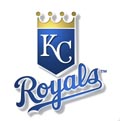Critics of interleague play offered their normal round of critiques, from "who cares about Royals-Brewers?" to "who cares about Royals-Rockies?" but personally I think it was great this year. Yankees in San Fran, Red Sox visiting San Diego (where a good 15,000 were Sox fans, I believe), Griffey back in Seattle (did you hear the ovations? You skipped out on a good thing, Junior), Thome back in Philly (and cheered, too)... sign me up for another round of this next year, cause it's a good thing.
The final count:
Batting average: NL .281-.268
Home runs: NL 271-267
Runs: AL 1,352-1,172
Wins: AL 137-115
I'm more of an appreciate-from-afar kind when it comes to sabermetrics, not all righteous about it like these guys, but the above numbers shows how unimportant batting average really is to baseball offense. The MLB.com interleague stats page doesn't include OBP or walks, which is weird considering much of the baseball establishment has come around on OBP as the more useful stat, but a little digging turns up these facts: The Red Sox and A's -- Moneyball teams -- lead the league in walk rate, and the top five teams in OBP are from the AL (nine of the top 12). This is all petty dot-connecting, and I'm sure I could be using my time doing more productive things, like planting trees, but bear with me. We can debate the reasons the AL has dominated the NL in recent years, but in my opinion it still comes down to the simple fact that the DH in the American League has forced its teams to play a different style of ball, one that doesn't sacrifice outs or automatically plug Juan Pierre into the leadoff spot. Contrary to misconception, AL teams don't necessarily rely on the long ball all the time, either.
So to review -- the formula:
Get on base however you can, drive the ball into the gap, fall back on solid pitching. Apply to large sample size, win 58 percent of games, get in playoffs.
Well, 94 wins would get you in the playoffs in the NL, anyway.
Unfortunately for the Royals -- who finished 10-8 in interleague and put up 17 runs twice -- reality hits tonight in the form of the Angels of Anaheim, Los Angeles, Orange County, California, USA, currently 49-27 and -- raise your hand if you knew this -- tied for the best record in baseball (one game behind the Red Sox in the loss column). Not to worry, intrepid Royals fans: newly acquired John Thomson -- yes, formerly of the Atlanta Braves (Royals Review offers a pretty hilarious line about this in this post) -- is slated to take the ball. Chone Figgins won't be getting six hits tonight.
Before we leave Milwaukee behind, I'd like to point out how deeply I envy the Brewers for their bevy of great young talent, including rookies Ryan Braun and Corey Hart, two guys who might be household names if baseball knew how to market its young stars. Braun went 4-for-4 on Friday with a HR and two stolen bases and Hart hit a game-tying home run last night in the 9th. If there's one team the Royals could hope to imitate -- besides the Braves, who Dayton Moore's trying to imitate -- it's Milwaukee. We'll revisit the Brew Crew periodically throughout the season.
Subscribe to:
Post Comments (Atom)








Repeat after me: Moneyball is not about OBP! Moneyball is about using statistics to find UNDERVALUED player qualities that correlate strongly to wins.
ReplyDeleteA Moneyball team is a team which looks at the player market and finds and exploits its inefficiencies. At the time Lewis wrote, there was a huge undervaluation of OBP. We're starting to come out of those dark ages, but some sportswriters still think of OBP as a "nerd statistic".
If it clarifies the point of my post any, pretend I didn't use the word "Moneyball." I didn't mean to imply that that fine book is ABOUT on-base percentage, since saying such a thing would be inaccurate and, apparently, offensive. But OBP does correlate strongly with runs scored and wins, and the baseball establishment has indeed come around, by and large, to a stat that it didn't value nearly as strongly 5-10 years prior.
ReplyDeleteAs for sportswriters: yeah, plenty of them haven't come around on, say, valuing slugging pct. over RBIs, but it's not really what the majority of fans want, and newspapers are in the business of serving its readers after all. So it is what it is, I suppose.